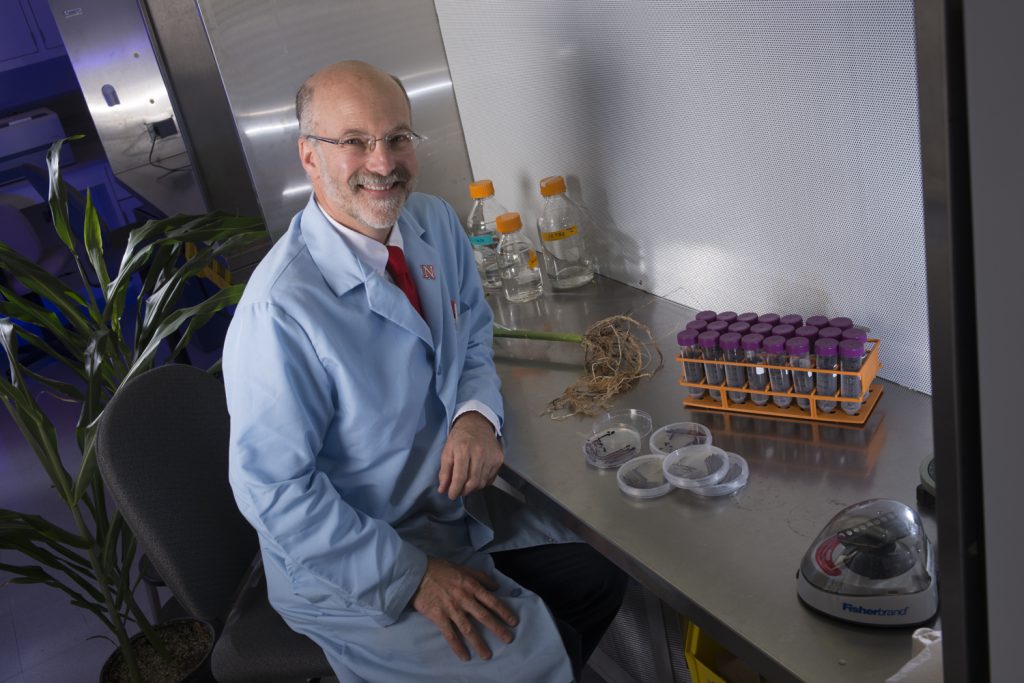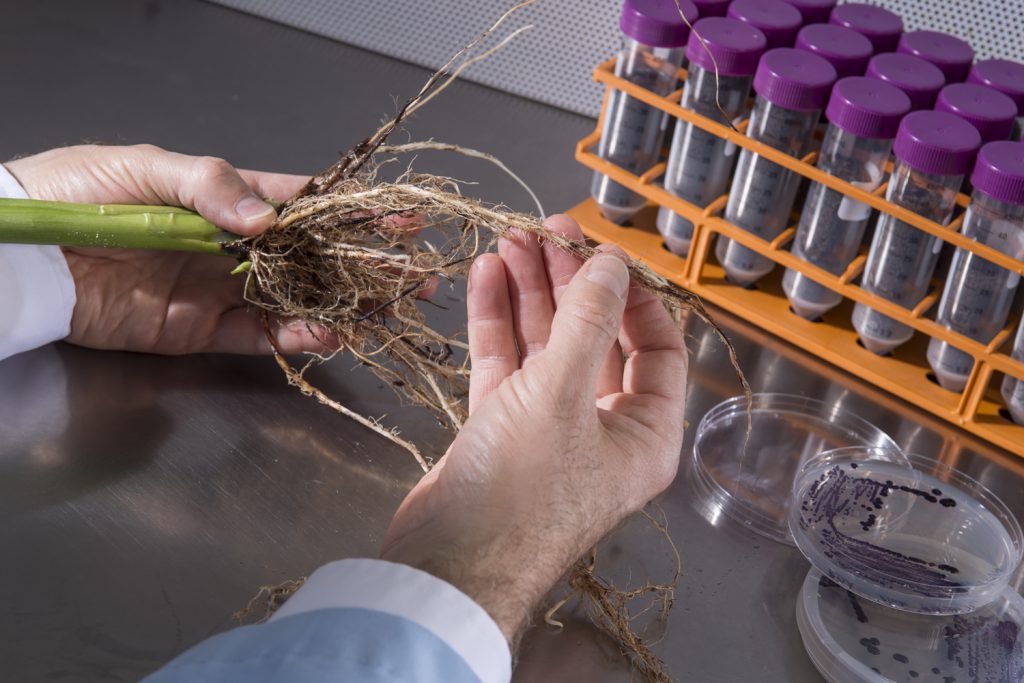Research at NebraskaThe University of Nebraska–Lincoln
2015-2016 report

Investing in the future
This is a pivotal time of growth and change at the University of Nebraska–Lincoln. We’re building on a strong foundation to define and expand our future role in solving the complex challenges facing our world.
Our research enterprise is growing as investments in people, programs and infrastructure pay off. Our success shows in the record research funding our faculty achieved this year. It’s reflected in Springer Nature’s 2016 list of Rising Star research institutions, which ranked UNL ninth in the U.S. and 90th among more than 8,000 international research institutions, chosen as “emerging institutions likely to play a role in addressing some of the globe’s most pressing challenges.”
We are rising because UNL began focusing on global challenges more than a decade ago under the leadership of Harvey Perlman, our chancellor from 2000-2016. Perlman set a course emphasizing excellence in academics and research. He invested in faculty and programs that exploit our strengths in food production, water, early childhood education and materials research, and in the facilities and equipment needed for world-class research. He cultivated private sector partnerships that launched Nebraska Innovation Campus, our private-public research campus that capitalizes on UNL research and helps drive economic development and innovation for Nebraska.
Now, a change in leadership is energizing the campus. Ronnie Green became UNL’s 20th chancellor in May 2016 after leading a renaissance in our Institute of Agriculture and Natural Resources over the past six years. He is challenging the campus with ambitious goals: more than doubling research expenditures, increasing enrollment from 25,000 to 35,000 students and rapidly expanding public-private partnerships. He sees a strong partnership with the University of Nebraska Medical Center driving innovation in research that will propel us toward a ranking as a top 35 public university.
This report highlights some of the research that is driving us toward these goals. Recent major grants in national priority areas recognize our expertise in soil microbiome research as well as our national leadership in early childhood learning and materials and nanoscience. Nebraska Innovation Campus continues its upward trajectory, including two health-related faculty startups and this fall’s groundbreaking for a new building.
Thanks to our strong foundation, our ambitious vision for the future and our commitment to collaboration and partnership, UNL is well positioned to meet the challenges vital to our state, our nation and our world.
Prem S. Paul
Vice Chancellor for Research
and Economic Development





